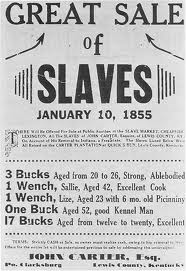How Many Slaves Landed in the US?
Share
Explore Our Galleries
Breaking News!
Today's news and culture by Black and other reporters in the Black and mainstream media.
Ways to Support ABHM?
By Henry Louis Gates Jr., The Root
Perhaps you, like me, were raised essentially to think of the slave experience primarily in terms of our black ancestors here in the United States.
In other words, slavery was primarily about us, right, from Crispus Attucks and Phillis Wheatley, Benjamin Banneker and Richard Allen, all the way to Harriet Tubman, Sojourner Truth and Frederick Douglass. Think of this as an instance of what we might think of as African-American exceptionalism. (In other words, if it’s in “the black Experience,” it’s got to be about black Americans.)
Well, think again. The most comprehensive analysis of shipping records over the course of the slave trade is the Trans-Atlantic Slave Trade Database, edited by professors David Eltis and David Richardson. (While the editors are careful to say that all of their figures are estimates, I believe that they are the best estimates that we have, the proverbial “gold standard” in the field of the study of the slave trade.)
Between 1525 and 1866, in the entire history of the slave trade to the New World, according to the Trans-Atlantic Slave Trade Database, 12.5 million Africans were shipped to the New World. 10.7 million survived the dreaded Middle Passage, disembarking in North America, the Caribbean and South America. And how many of these 10.7 million Africans were shipped directly to North America? Only about 388,000.That’s right: a tiny percentage.
Read more here.
Read about the trans-Atlantic slave trade.
Once you’re done, keep updated with Black news.










Comments Are Welcome
Note: We moderate submissions in order to create a space for meaningful dialogue, a space where museum visitors – adults and youth –– can exchange informed, thoughtful, and relevant comments that add value to our exhibits.
Racial slurs, personal attacks, obscenity, profanity, and SHOUTING do not meet the above standard. Such comments are posted in the exhibit Hateful Speech. Commercial promotions, impersonations, and incoherent comments likewise fail to meet our goals, so will not be posted. Submissions longer than 120 words will be shortened.
See our full Comments Policy here.